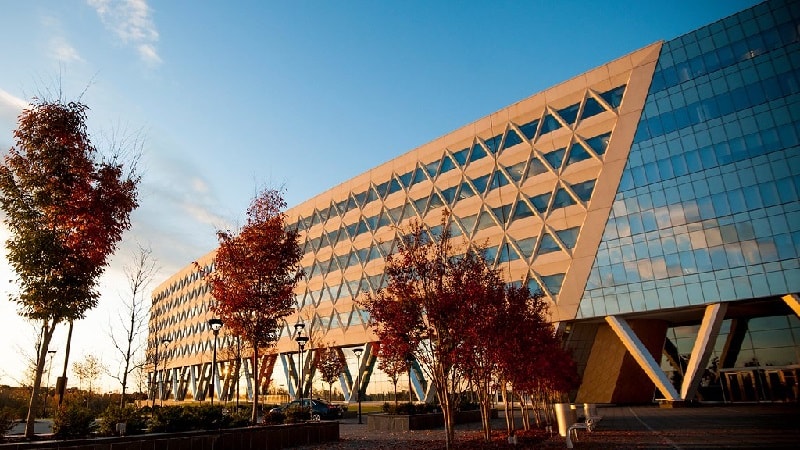
At the Geo-Resolutions Conference – a joint conference between the National Geospatial-Intelligence Agency (NGA) and Saint Louis University on Sept. 28 – experts explored geospatial solutions to help combat climate change and expand the GEOINT workforce in the St. Louis region.
Climate change has been a topic of much debate in recent years, and NGA Director Navy Vice Adm. Frank Whitworth explained that NGA has a special responsibility to ensure data provided concerning climate change is accurate.
“[We need] to build trust with both the scientific community and the public as the United States begins to tackle the challenges that come with climate change,” Whitworth said.
Other NGA staffers concurred with the director and explained that effective action to address climate change depends on access to, and plans based on, geospatial and many other forms of data.
Anthony Nguy-Robertson, a research and development scientist at NGA, explained that that fusion of knowledge – which is created by all sorts of data and powered by the experts that collect, distill, and explain the data – can provide humans the understanding required to address complex issues related to climate change.
“Geo-Resolutions is a perfect venue for collaboration among people with different kinds of expertise to solve problems caused by climate change,” NGA human geographer Caitlin Flanagan said during a panel session on human migration.
During the conference, Director Whitworth also discussed the value of the agency’s collaborations with the geospatial community in St. Louis. He explained that the city has become a powerful blend of academic, civic, and industry efforts building a thriving geospatial community in the region.
“NGA has a key role to play in that community and is well-situated to do so, with its new facility opening in 2026 in North St. Louis,” he said. “I’ve already started using St. Louis as an example for other communities looking to foster geospatial development.”
He also emphasized St. Louis’ role in the effort to develop a more diverse workforce, praising NGA’s collaboration with Harris-Stowe State University – a historically black college and university (HBCU) located near the new NGA campus in St. Louis – to develop geospatial talent among HCBU students in St. Louis and nationwide.
“Representing the demographics of America as we defend America is the right thing to do,” Whitworth said, adding that different viewpoints and perspectives make NGA geospatial intelligence analysis richer.
Andrew Hayden, director of the NGA College, concurred with the director and emphasized the value of a diverse workforce.
“The world is complex,” he said. “NGA needs a diversity of thought to answer questions from different approaches and perspectives and come up with new questions we haven’t anticipated yet.”
Hayden also explained the importance of exposing students to geospatial technology early in a student’s academic journey to help introduce students to geospatial career opportunities.
“Make it real to them,” he said. “Get them excited about learning about their world.”
